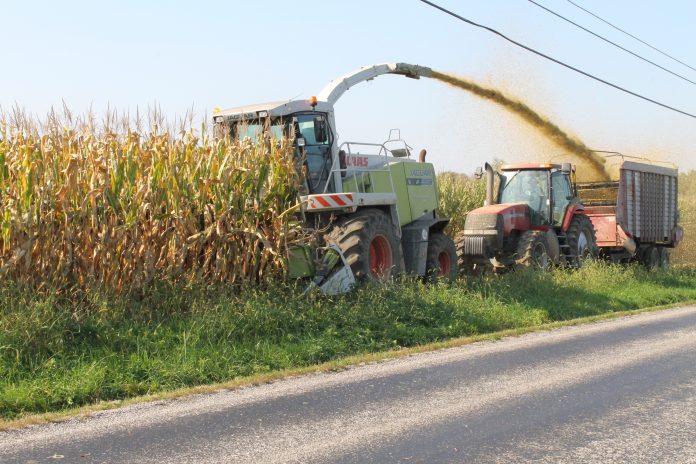With the variability in planting dates, we have corn silage that may be ready to harvest mid-September, but most of it will not be ready until early to mid-October.
With variable harvest dates, it will be important to estimate how many tons will be harvested late.
Early corn will be the best for dry grain since it has potential to actually dry down.
This will lead to needing an accurate estimate yield in fields to be harvested later so you have enough tons of silage from both planting dates.
There are two common ways to estimate tonnage, one based on plant height and the other based on estimated grain yield. Both use 30% dry matter at harvest for the as fed harvest tonnage.
When there is little or no grain present, each foot of plant height yields one ton of silage per acre. Exclude the tassel when you measure plant height.
This leads to a 5-foot-tall earless plant yielding 5 tons of silage per acre. If your corn successfully pollinated, you can base silage tonnage on grain yield.
For stressed corn with a yield estimate of 100 bushels or less, you will harvest about one ton of silage for each five bushels of grain.
When yields increase, you will have more bushels of corn per ton of silage, from 100-150 bushels per acre. Each 7.5 bushels of corn will yield about one ton of silage.
As yields continue to increase, you will see up to eight bushels of grain per ton of silage. Of course, those are both rough estimates.
The best way for estimating tonnage is to use a weed eater and cut 1/100th of an acre, which is 32.5 feet, in 30-inch rows. Weigh your sample, then divide the pounds by 4 (a standard factor) to get tons per acre.
This should also be done in four areas of the field. In order to conduct the yield estimate based on grain yield, you will need to estimate grain yield.
There are two common methods for estimating grain yield.
The most accurate is the ear weight method, where actual weights of ears are used.
The other is yield component method, used most often before black layer.
Yield component method
There are several smartphone apps that make the yield component method easier.
Count the ears in 1/1000th of an acre, 17 feet 5 inches for 30-inch row spacing.
On every fifth ear, count the number of kernels long except the very tip and butt of the ear that are not full of kernels.
Also, count the number of rows around. Average the counts of ear length and rows around.
Step A) Multiply average rows by average kernels long.
Step B) Multiply results of A by the number of ears.
Step C) Divide results of B by 85 (85 is the fudge factor representing 85,000 kernels per bushel. The factor could be adjusted to 90 if kernels are small during a stressed year). For best results, this process needs done a minimum of four times per field and by hybrid.
Ear weight method
Once the corn has reached black layer, using the ear weight method will be more accurate.
For this method, you count the number of ears in 1/1000th of an acre collecting every fifth ear to weigh.
Average the ear weight. Hand shell the ears to determine the average grain moisture.
Step A) Multiply ear number by average ear weight.
Step B) Multiply average grain moisture by 1.411.
Step C) Add 46.2 to the results from step B.
Step D) Divide the result of step A by the results from step C.
Step E) Multiply the results by 1,000.
While there is a lot of room for error in these methods, they should get you in the ballpark.
Err on the side of caution and plan to harvest a few extra tons in case your late-planted corn does not yield what you estimated.













